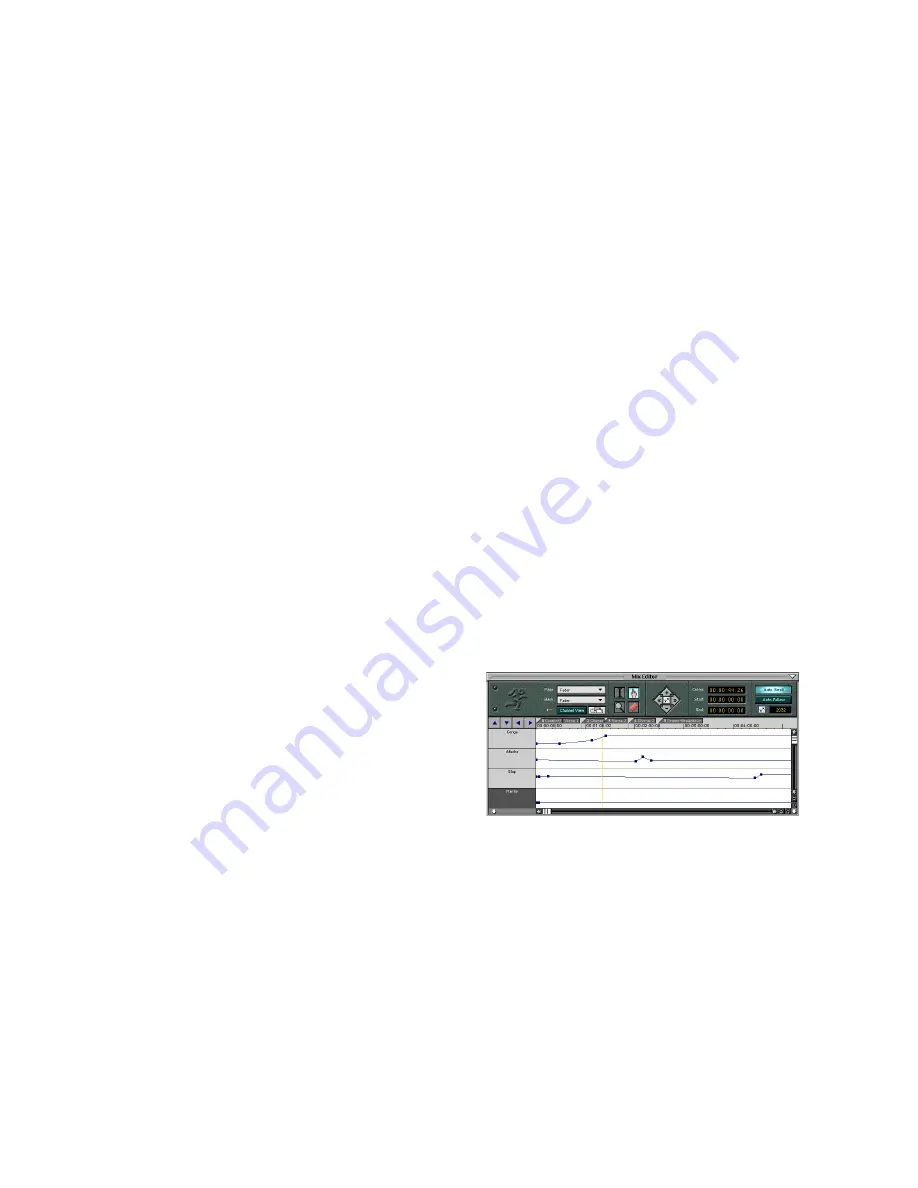
D8B Manual • Chapter 3 • page 77
When Channel View is highlighted, the Mix
Editor Channel List changes to a parameter list. This
mode views one channel, effect, bus, aux, group,
MIDI channel, or plug-in at a time. The list then
contains all parameters available for automation.
The six buttons to the left of the Page and
Back pull-down lists act as filters for parameter
selection:
• When none of these six buttons is pressed, all
data is displayed for the selected channel.
• Highlight the EQ button to display EQ data
only.
• Highlight the Comp button to display
compression data only.
• Highlight the Gate button to display gate data
only.
• Highlight the FMP button to display fader,
mute, and pan data only.
• Highlight the Busses button to display bus
data only.
• Highlight the Auxes button to display aux
data only.
These buttons can be selected in combination
with each other. For example, to view EQ and
compression data, simply highlight both EQ and
Comp.
Four Nudge Arrows
These arrows are located in the Mix Editor
control palette immediately to the left of the
Cursor, Start, and End time windows.
• When these arrows are clicked with the mouse,
highlighted data regions can be moved back and
forth in time (left-right arrows), or values within
the highlighted regions may be incrementally
increased or decreased by using the up-down arrows.
• The resolution of these moves is relative to the
current screen resolution, so the greater the zoom-
in value, the finer the resolution of any modifications.
• Using the nudge arrows is a good way to toggle
mute events on and off by highlighting regions on
a mute track and simply nudging up or down to
change mute states.
Flip View Icon
This tool swaps the Page parameter views in
the Mix editor. For example, if “Fader” is fore-
ground and “Mute” is background, clicking on the
flip icon will toggle the view to show “Mute” as
foreground and “Fader” as background. Toggling
the flip once more will flip the view back to the
original view of “Fader” as foreground and “Mute”
as background.
Cue Points
Tabs along the top of the time line indicate
cue points. Simply click and drag the cue point
tabs to reposition them in the Mix Editor window.
Performance Note:
For optimum graphic update
performance during automation and playback, it is
best to close all windows other than the Mix Editor.
Automation Moves
• The box under the Auto-Follow button displays
Node usage and availability.
Summary of Contents for D8B 3.0
Page 8: ...D8B Manual Preface page 2 ...
Page 9: ...D8B Manual Chapter 1 page 3 Chapter 1 Getting Ready ...
Page 27: ...D8B Manual Chapter 2 page 21 Chapter 2 Where Is It ...
Page 47: ...D8B Manual Chapter 3 page 41 Chapter 3 What s On TV ...
Page 93: ...D8B Manual Chapter 4 page 87 Chapter 4 Applications ...






























